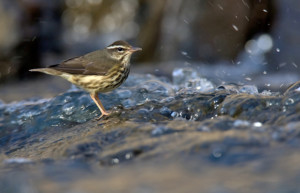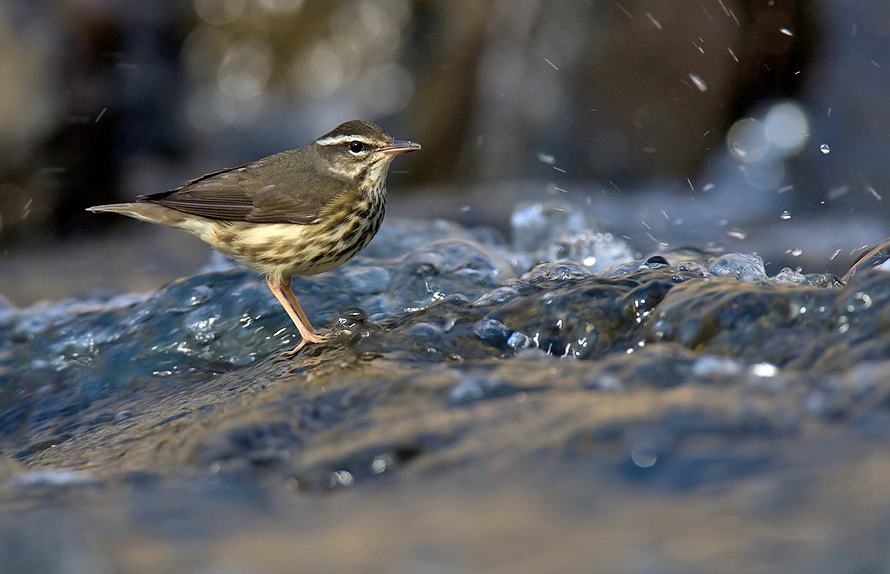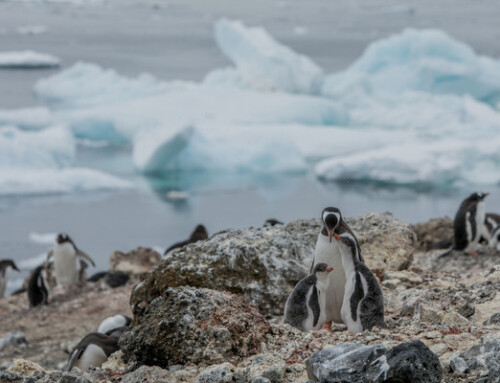 LINKED PAPER
LINKED PAPER
Epigenetic response of Louisiana Waterthrush Parkesia motacilla to shale gas development. Frantz, M.W., Wood, P.B., Latta, S.C. & Welsh, A.B. 2020. IBIS. DOI: 10.1111/ibi.12833 VIEW
Humans activities are changing the face of our planet. These environmental changes often have a big impact on species that have evolved a specialized lifestyle. In North America, for example, the development of shale gas negatively affected the Louisiana Waterthrush (Parkesia motacilla), a bird adapted to life in forest streams. Locations with shale gas development showed lower nest survival, probably because the aquatic prey of the Louisiana Waterthrush declined in these disturbed areas (Frantz et al. 2018, Wood et al. 2016). The negative effects of human-mediated habitat change are clearly visible on the population level, but could there also be consequences on the molecular level?
Epigenetics
Environmental changes could affect epigenetic modifications, such as DNA methylation patterns (Bossdorf et al. 2008). But what does this sentence mean? How do epigenetic modifications work and what is DNA methylation? Time for a crash course in molecular biology before we dive into the Louisiana Waterthrush situation. Compare the genome to a huge book with thousands of recipes. Each recipe (or gene) contains the instructions to make a delicious dish. Now imagine a cook designing the menu for his restaurant, casually browsing through the book. Each time he comes across a suitable dish, he marks it with small piece of green sticky paper. Because the restaurant will only offer vegetarian dishes, the cook also decides to indicate meat-based recipes with a red sticky paper. The green and red sticky papers can be seen as epigenetic modifications, chemical changes in the genome that do not affect the DNA sequence (notice that the cook did not change the recipes), but indicate whether a gene should be used or not. DNA methylation is a particular type of epigenetic modification that inactivates a gene. A red sticky paper.

Figure 1 The number of methylated sites in males (top) and females (bottom) with increasing level of environmental disturbance (measured as Strontium parts per million).
Males vs. females
A recent study took a closer look at the methylation patterns of the Louisiana Waterthrushes, living in streams differently affected by the shale gas development. Chemical pollutants can affect patterns of DNA methylation, allowing individuals to activate different genes and quickly adapt to stressing conditions. The researchers studied the methylation patterns of over 300 individual birds and noticed that in disturbed streams males had fewer methylated DNA-sites compared to females. This finding suggests that males react to the environmental stress by changing the expression of their genes. Whether these changes increase their survival chances is not clear. It is possible that these males fell into an ‘epigenetic trap’ where contaminants alter methylation patterns that result in maladaptive gene expression (O’Dea et al. 2016). Females, however, did not show decreased methylation across their genomes. The observation that females do not change their gene expression suggests that they are better able to withstand the chemical pollutants. Indeed, females generally had a higher body condition (Latta et al. 2016). How they do this – which genetic recipes they select from the cooking book – remains to be determined.
References
Bossdorf, O., Richards, C.L. & Pigliucci, M. (2008). Epigenetics for ecologists. Ecology Letters 11: 106– 115. VIEW
Frantz, M.W., Wood, P.B., Sheehan, J. & George, G. (2018). Demographic response of a migratory songbird of conservation concern to shale gas development. Condor 120: 265– 282. VIEW
Latta, S.C., Cabezas, S., Mejia, D.A., Paulino, M.M., Almonte, H., Miller‐Butterworth, C.M. & Bortolotti, G.R.( 2016). Carry‐over effects provide linkages across the annual cycle of a Neotropical migratory bird, the Louisiana Waterthrush Parkesia motacilla. Ibis 158: 395– 406. VIEW
O’Dea, R.E., Noble, D.W.A., Johnson, S.L., Hesselson, D. & Nakagawa, S. (2016). The role of non‐genetic inheritance in evolutionary rescue: epigenetic buffering, heritable bet hedging and epigenetic traps. Environmental Epigenetics 2: dvv014. VIEW
Wood, P., Frantz, M. & Becker, D. (2016). Louisiana Waterthrush and benthic macroinvertebrate response to shale gas development. Journal of Fish and Wildlife Management 7: 423– 433. VIEW
Image credits
Top right: Louisiana Waterthrush Parkesia motacilla | William H. Majoros | CC BY-SA 3.0 Wikimedia Commons
Blog posts express the views of the individual author(s) and not those of the BOU.
If you want to write about your research in #theBOUblog, then please see here





